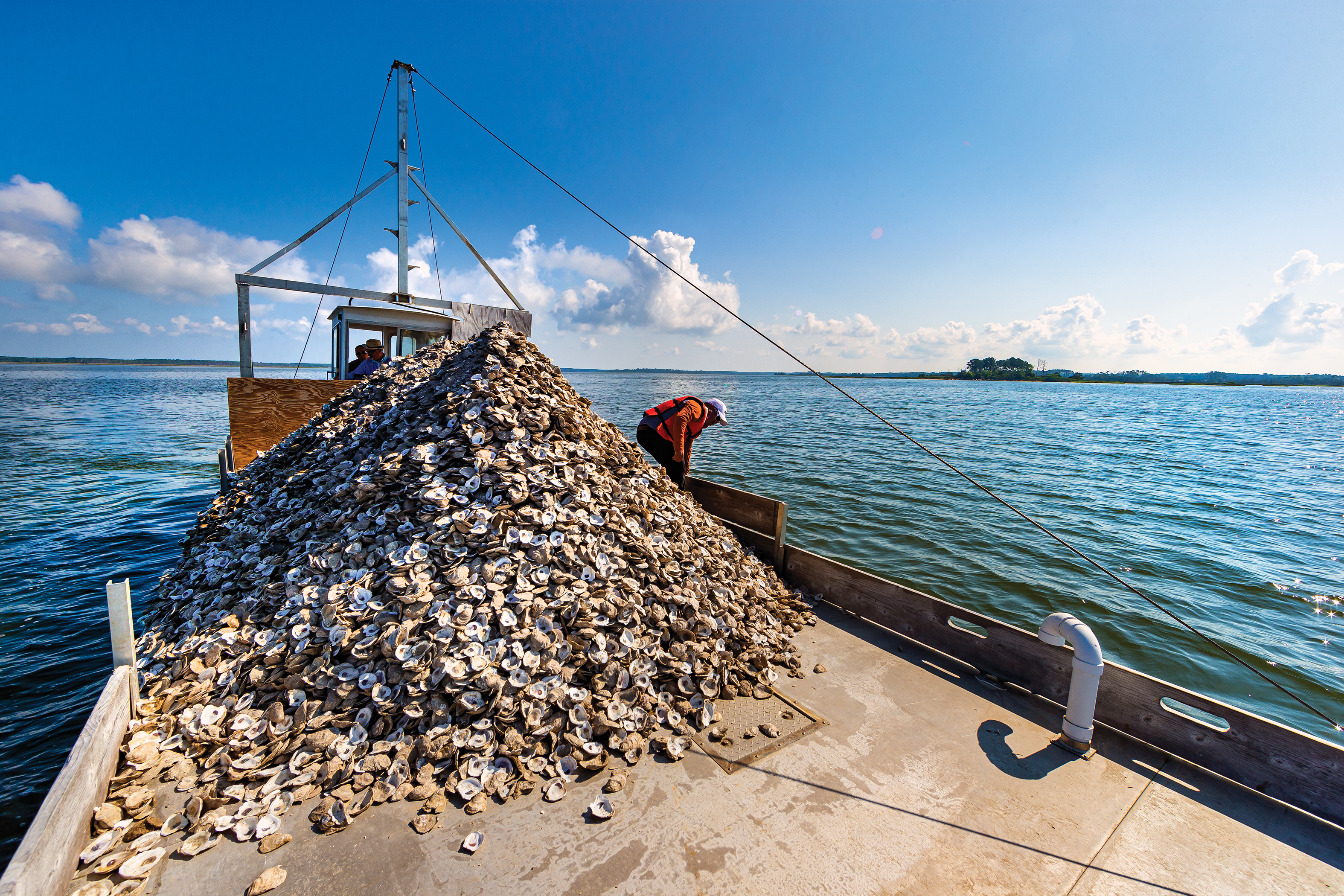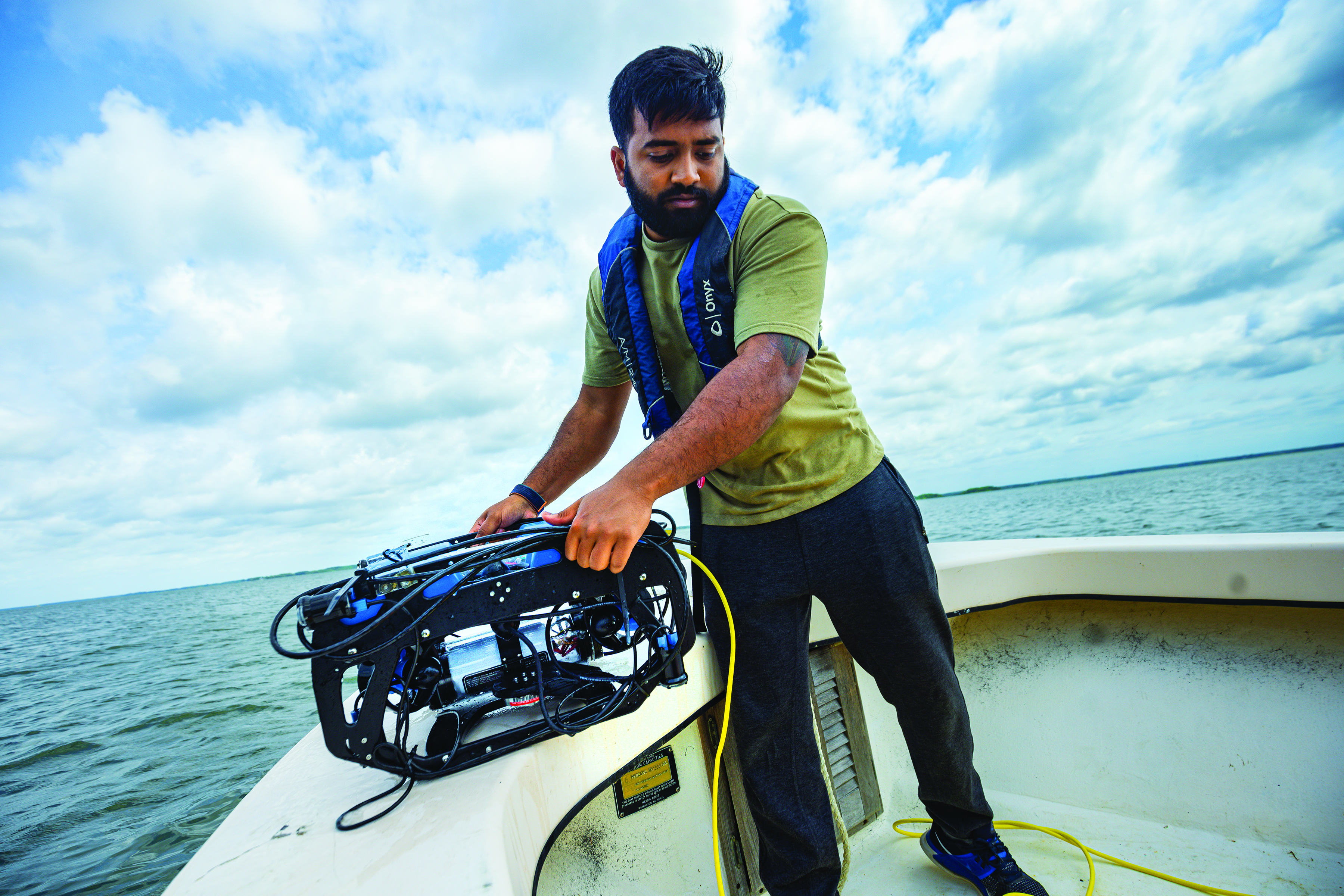When U.S. Department of Agriculture wants to advance shellfish production with autonomy and AI
More than 150 years ago, Maryland launched its “Oyster Navy” to fight off illegal harvesting by rapacious pirates who’d stripped the shellfish from the waters of their own states and were now plundering the bounty of the Chesapeake.
 Despite the seagoing police force’s efforts (sometimes backed by rifles and cannons), centuries of overharvesting, mismanagement, and devastating diseases squandered those natural riches. Maryland’s yearly oyster harvests plummeted from 19th-century highs of 15 million bushels to just 26,000 in 2003. The 540,000 bushels taken this year—the most in 35 years—is still less than 4 percent of the 19th century record.
Despite the seagoing police force’s efforts (sometimes backed by rifles and cannons), centuries of overharvesting, mismanagement, and devastating diseases squandered those natural riches. Maryland’s yearly oyster harvests plummeted from 19th-century highs of 15 million bushels to just 26,000 in 2003. The 540,000 bushels taken this year—the most in 35 years—is still less than 4 percent of the 19th century record.
Today, a multi-institutional team of researchers led by Maryland Engineering is developing a modern-day analog to the Oyster Navy, fighting to restore oyster populations— not with gunboats, but with underwater robots.
The project funded by a $10 million grant from the U.S. Department of Agriculture (USDA) seeks to infuse the Maryland shellfish industry with technologies that have revolutionized landbased agriculture. So-called “precision farming” often uses robotic aerial drones mounted with sensors to scan fields for factors like topography and soil content, giving farmers data to plan seeding or harvesting schedules, or apply fertilizers in exact amounts where needed.
Overall project leader Miao Yu, an engineering professor who specializes in robotic sensing, says Maryland’s archaic oyster trade needs modern methods to augment its traditions.
“The shellfish industry in the Chesapeake Bay is mostly using the same technology from 200 years ago, with most things done very laboriously by hand,” she says. “It has not evolved, not adapted like terrestrial farming.” Decisions as basic as where to plant oyster larvae and steer a boat to find fully grown ones are still based on intuition and experience, rather than objective data.
 On a recent data-gathering trip on the Choptank River, a major Chesapeake Bay tributary, Yu’s doctoral student Keshav Rajasekaran struggled in an open boat against glaring sun and murky water to control a pair of microwave oven-size aquatic drones fitted with optical and acoustic sensors.
On a recent data-gathering trip on the Choptank River, a major Chesapeake Bay tributary, Yu’s doctoral student Keshav Rajasekaran struggled in an open boat against glaring sun and murky water to control a pair of microwave oven-size aquatic drones fitted with optical and acoustic sensors.
Working with Alan Williams, a master’s student studying with fisheries scientist, and project co-lead Matthew Gray of the University of Maryland Center for Environmental Science, Rajasekaran hunched over his laptop directing the robots to gather visual and sonar imagery of oysters.
“The idea is: The sonar can see the oysters through the turbid water from a distance although with low resolution, while the camera has high resolution, but can only see the oysters close up—so we plan to use both,” he says.
With all that and a type of artificial intelligence known as machine learning, Yu and her collaborators are teaching a computer system to recognize sonar signatures of marketable oysters. One day, a robot—even a swarm of them—could zoom through an area and quickly provide an oyster farmer with a map showing a host of metrics, including where oysters are ready to harvest, where they’re immature, and empty zones.
Beyond oyster visibility, the USDA and NSF project could lead to a range of revolutionary practices, Yu says: Underwater robots planting tiny oysters affixed to shells, or “spat,” in perfect spots, or harvesting with delicate precision that takes only viable shellfish and leaves growing ones and the bay bottom undisturbed. “People think we’re dreaming if we mention all that,” Yu admits.
Another aspect led by Yang Tao, an engineering professor who specializes in the application of machine vision to industrial automation, is examining how to plot perfect dredging paths to avoid immature oysters while using as little fuel as possible. Other collaborators hail from the UMD Department of Computer Science, University of Maryland Eastern Shore, Louisiana State University, Pacific Shellfish Institute, Virginia Tech, Georgia Tech, and the Fraunhofer Center for Experimental Software Engineering. Together, the technologies could be applied to other types of seafood, from mussels to crabs.
Don Webster, a UMD Extension principal agent focused on aquaculture and one of the projects co-leads, says advanced aquaculture technologies could reshape the industry and make oysters once again a staple in the American diet. “As I tell my growers, ‘I want to see Wendy’s, Popeye’s, and Burger King arguing over who’s got the best oyster sandwich,’” he says.
-by Chris Carroll
Top